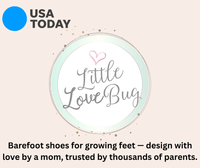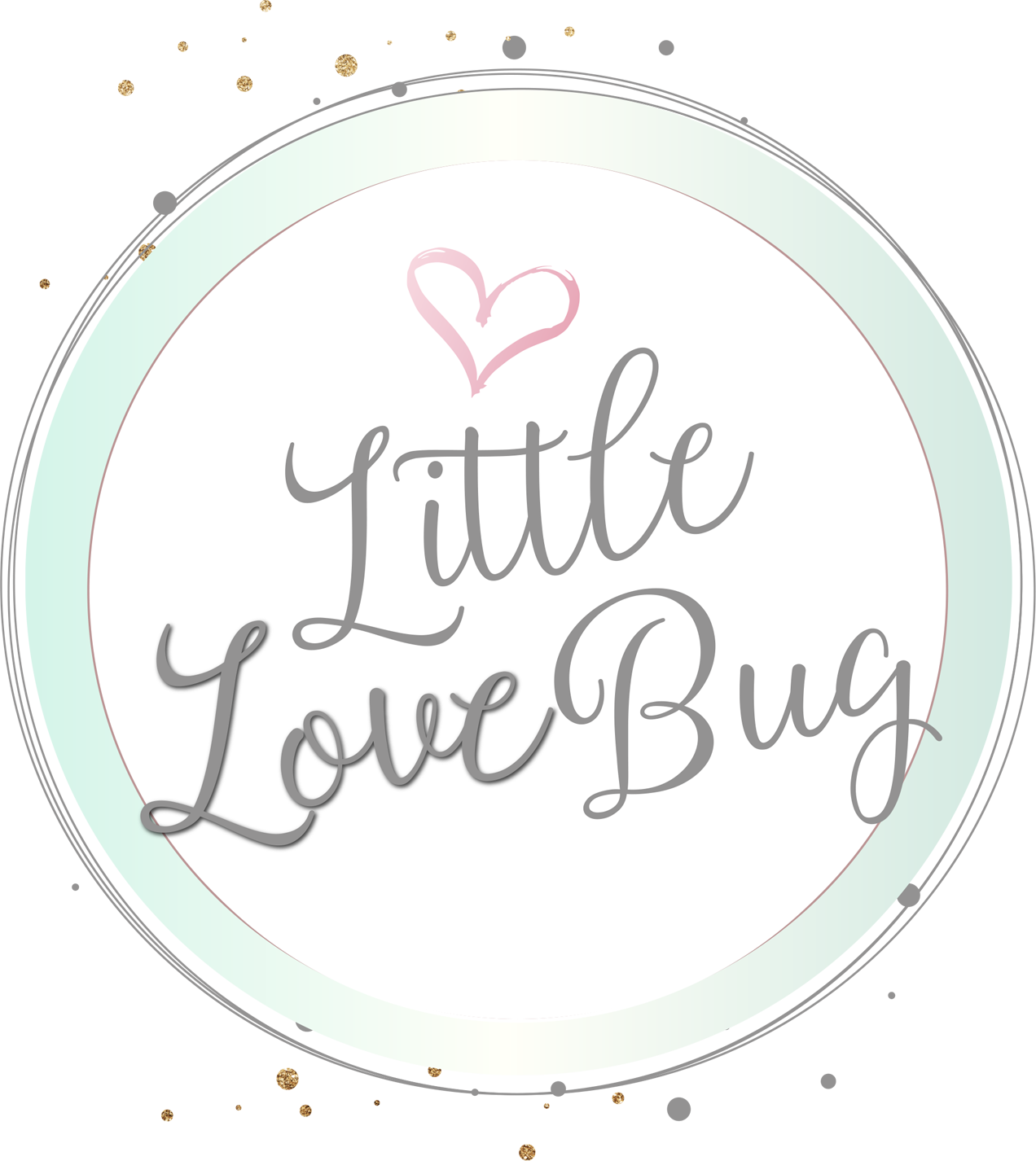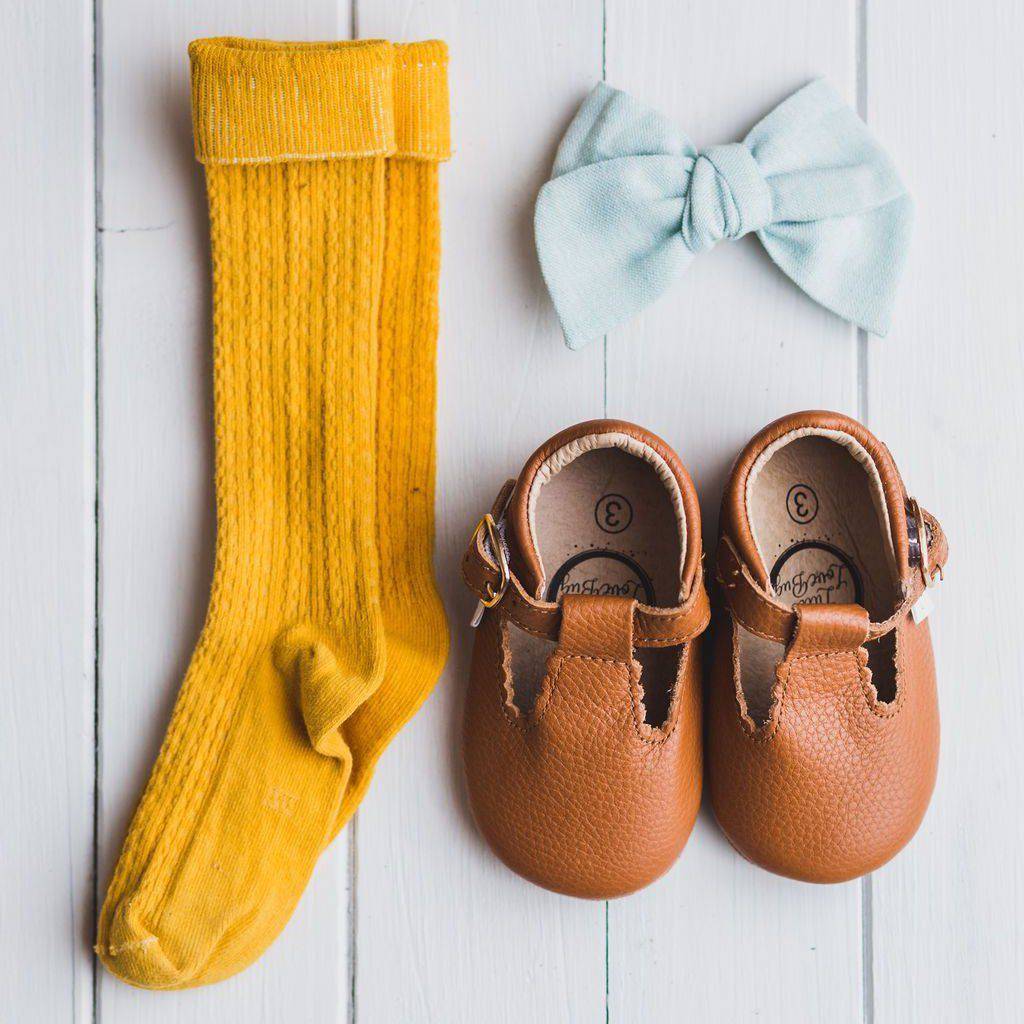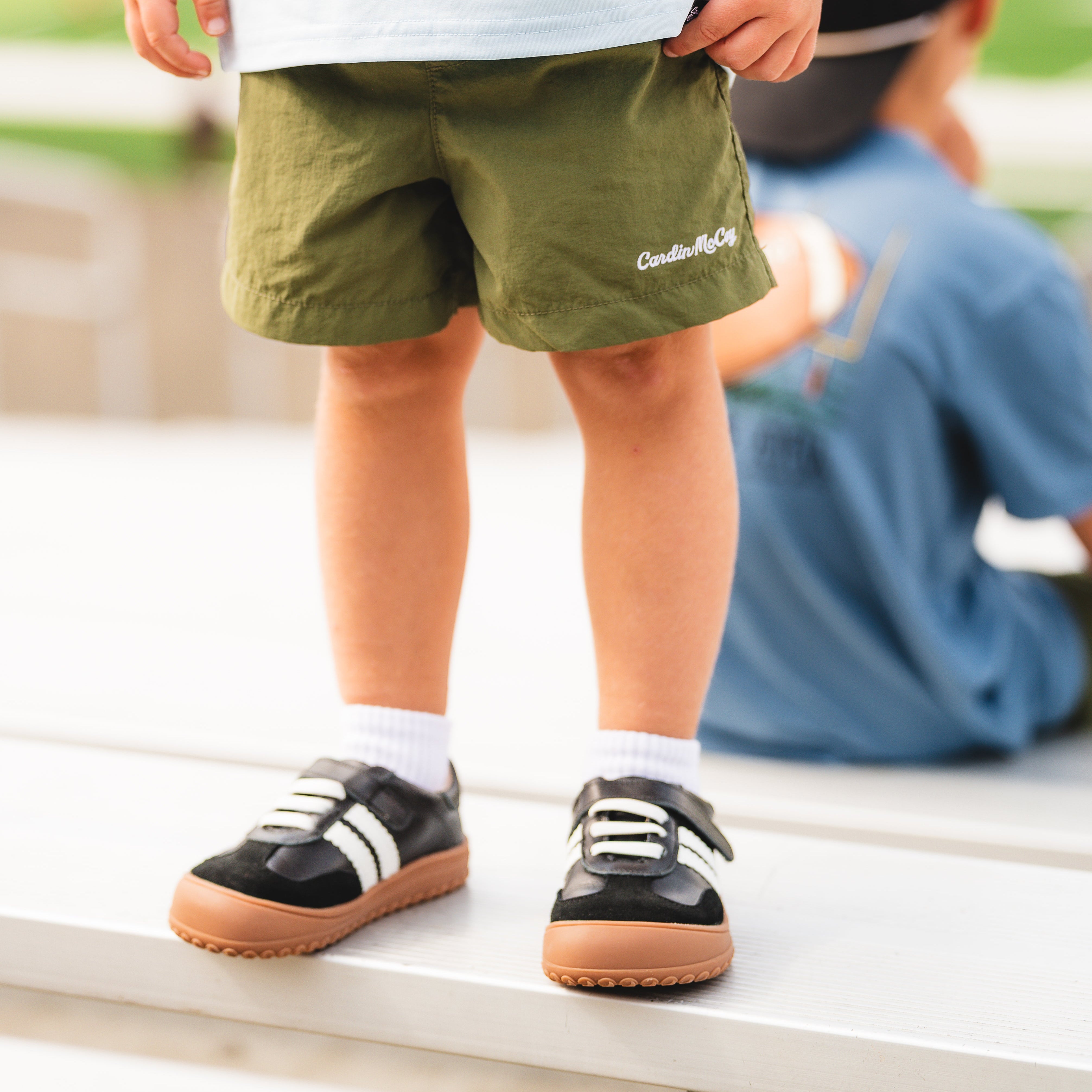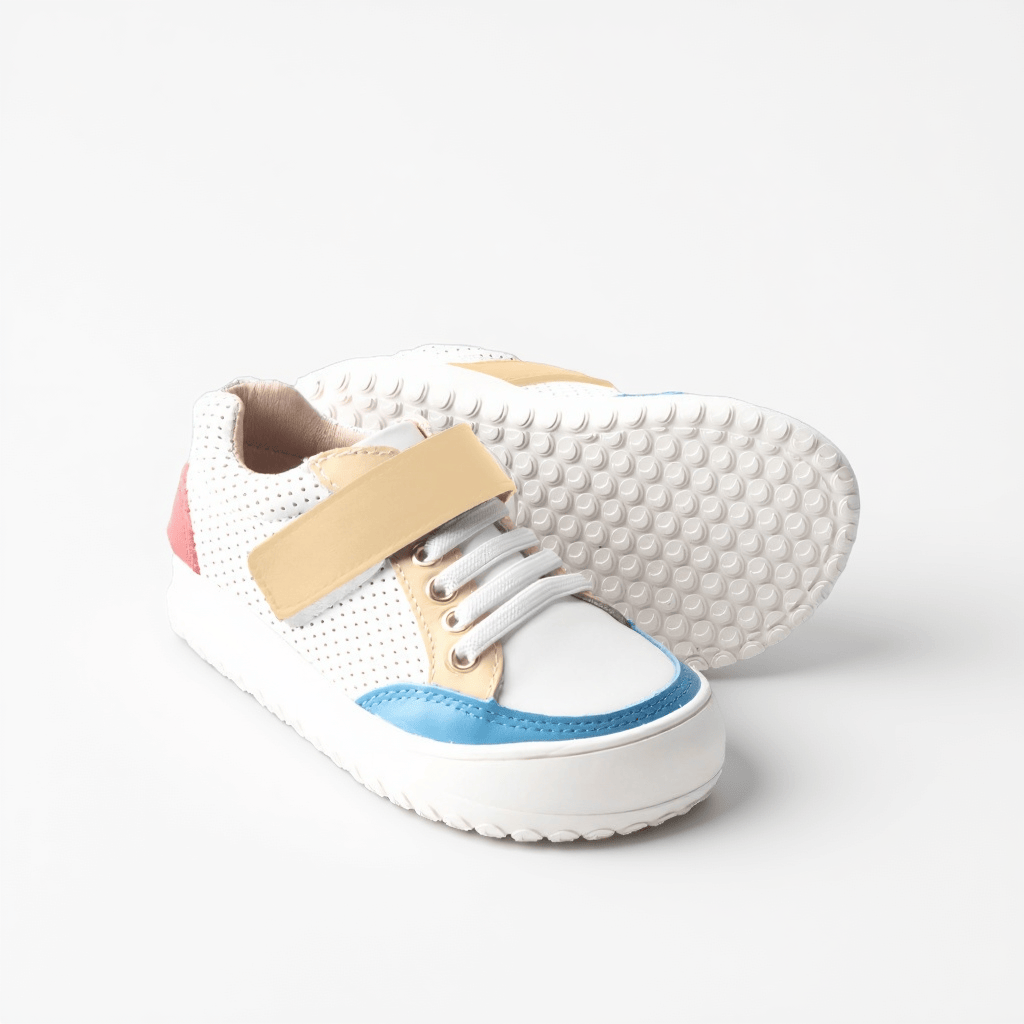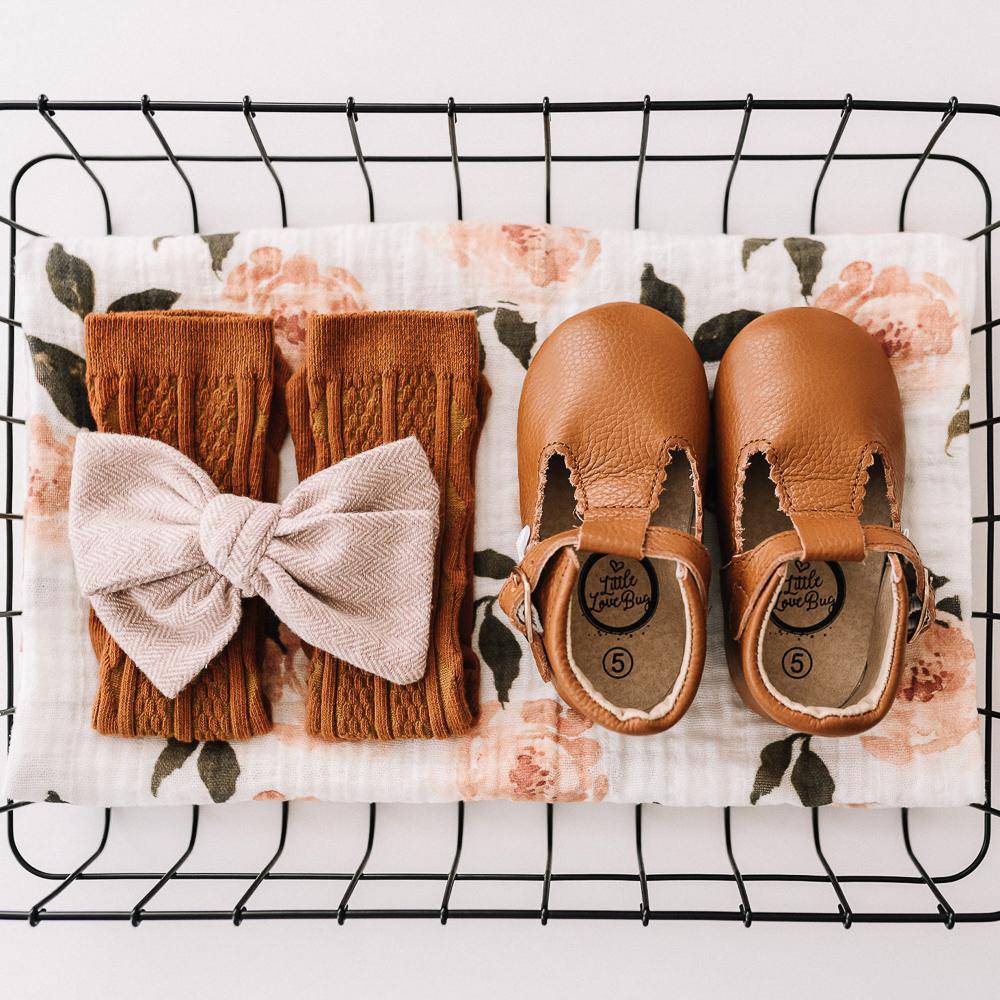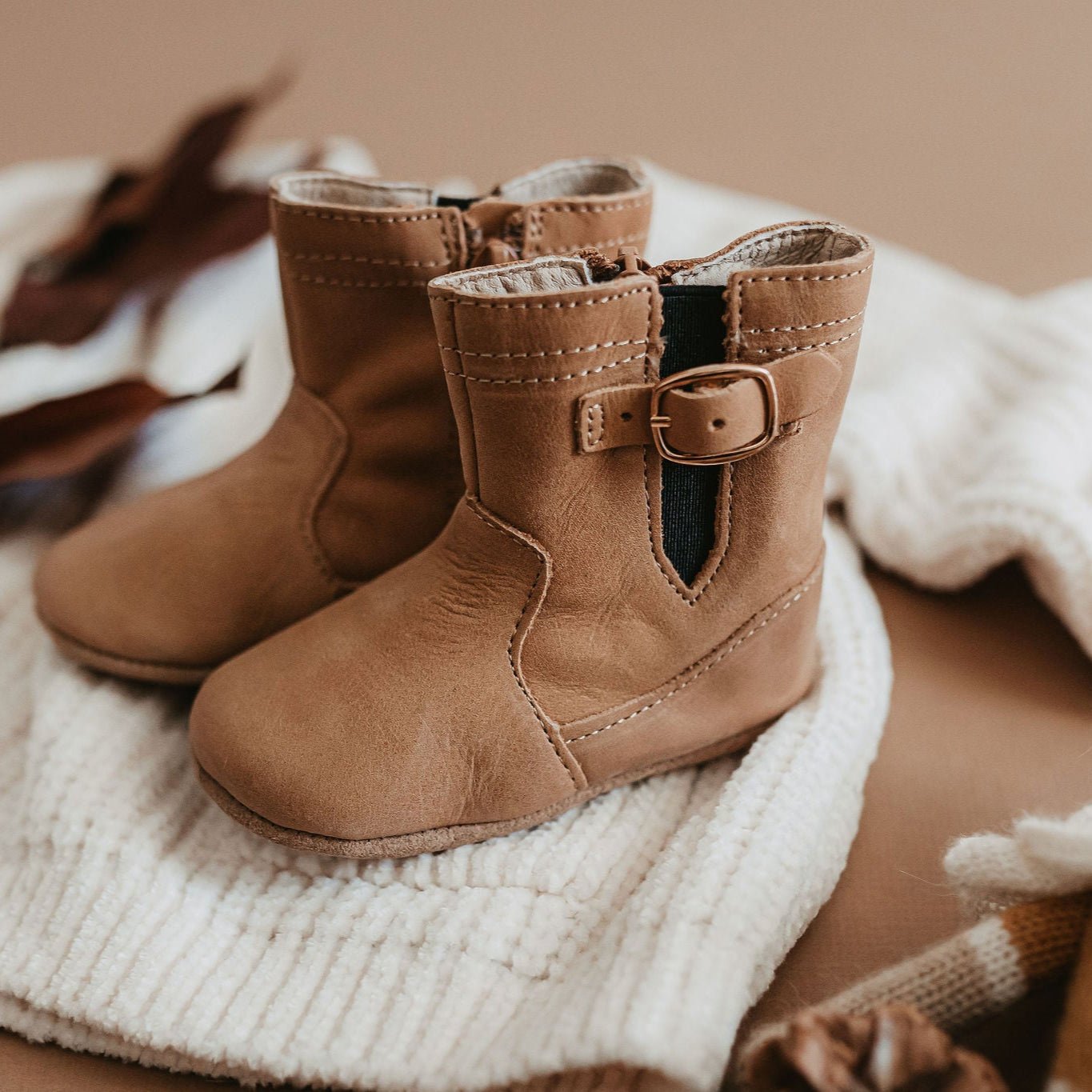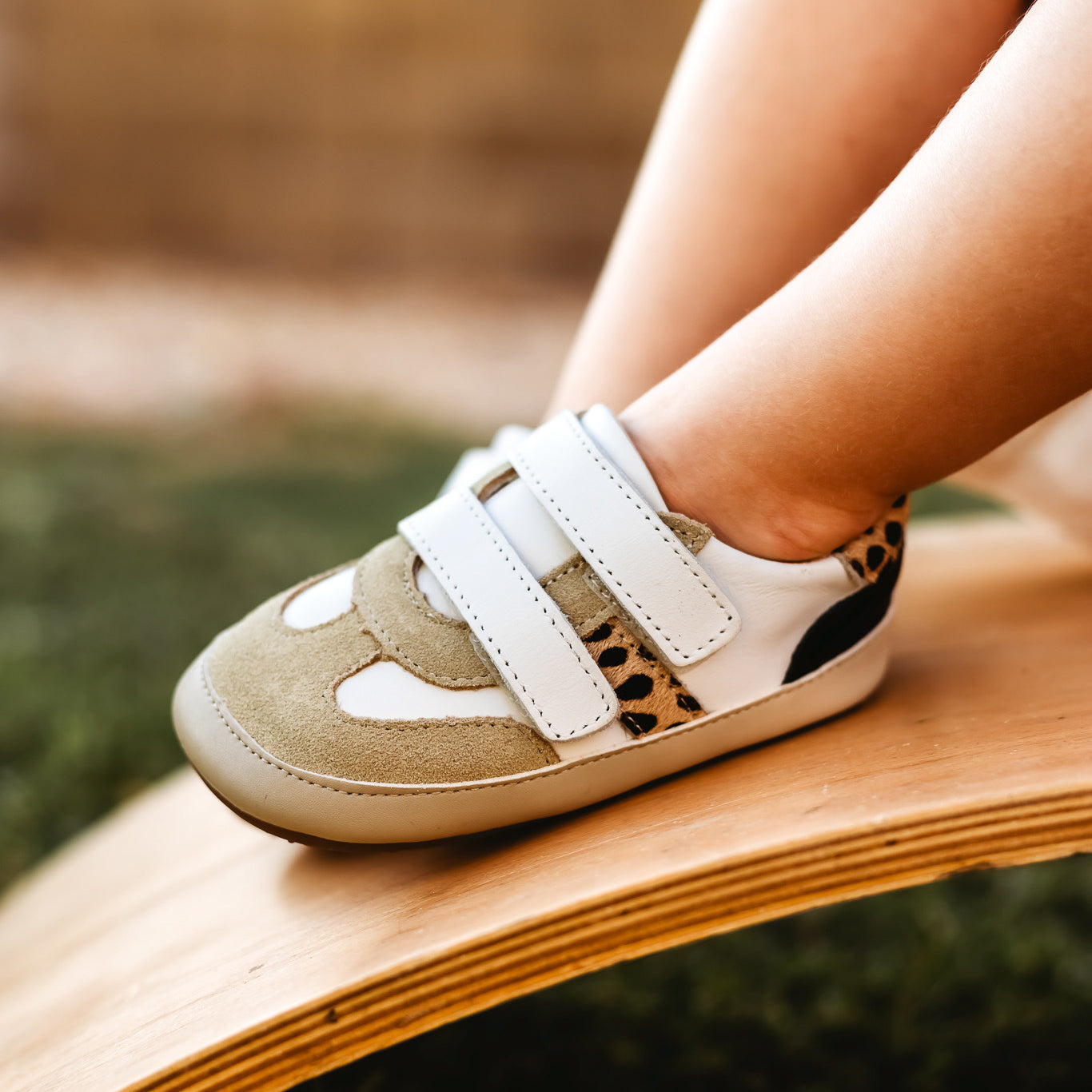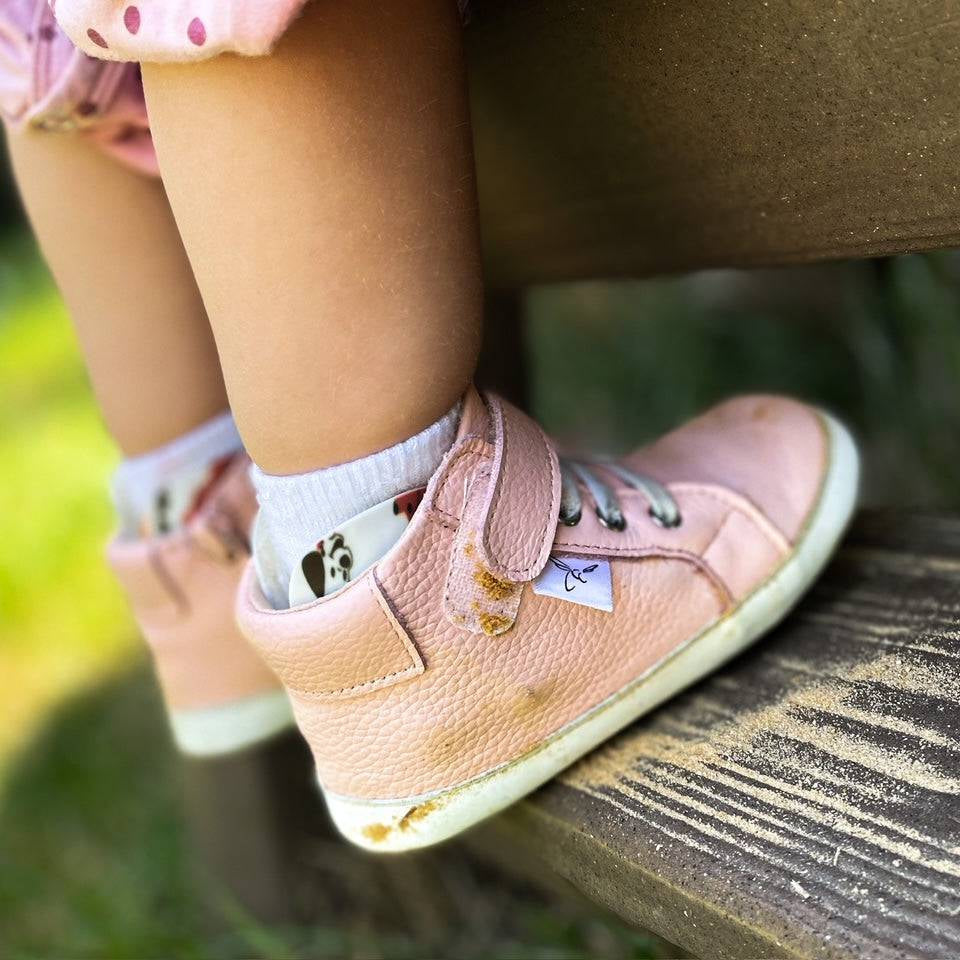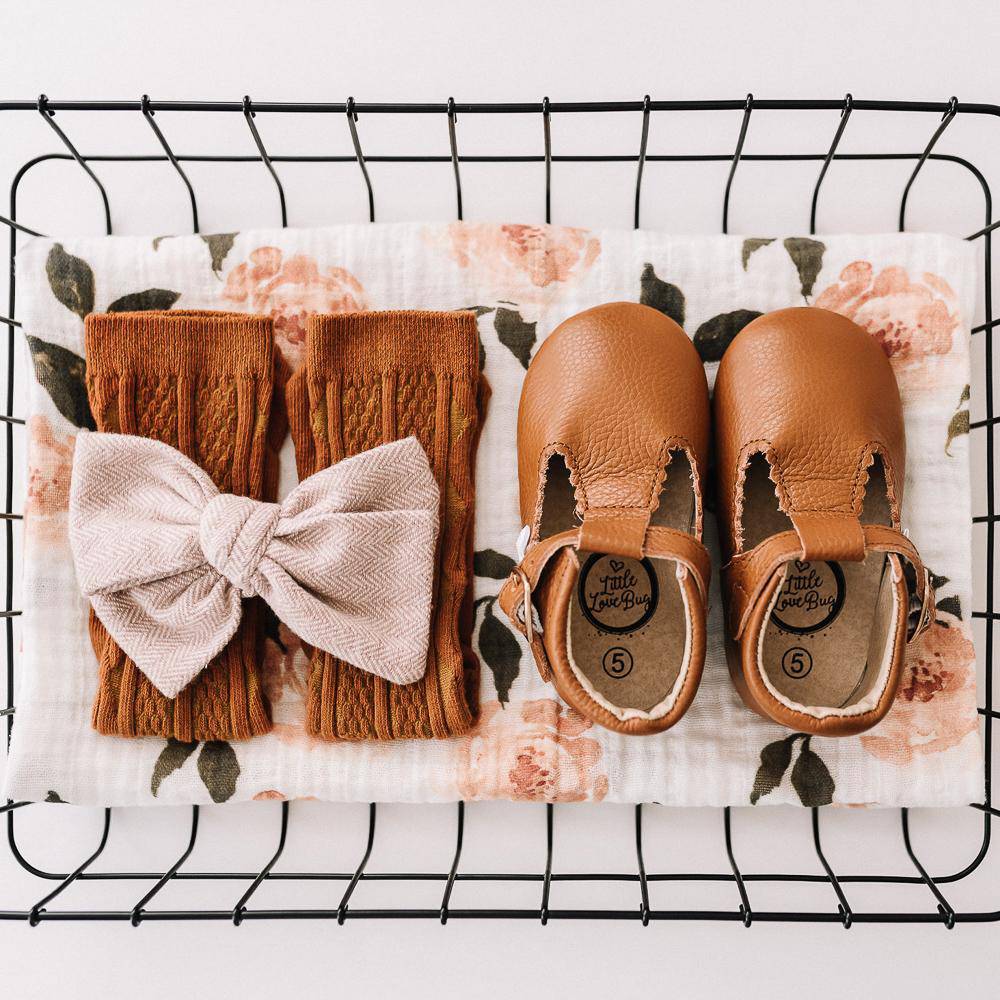Is it time to ditch your shoes and go barefoot? Here's what the science says.
Is it time to ditch your shoes and go barefoot? Here's what the science says.
It's a question many adults have asked themselves - should I give up my traditional shoes and go barefoot? There has been a surge in the popularity of so-called "barefoot shoes" in recent years, with many claiming that they can provide a range of health benefits. But what does the science actually say about going barefoot? In this blog post, we'll explore the latest research to find out if it's really time to ditch your shoes and go barefoot.
The benefits of going barefoot
Going barefoot has been linked to a number of health benefits, both physical and mental. Many people report feeling more relaxed, balanced and grounded when going without shoes. Being barefoot also allows for increased body awareness, as you're able to feel the ground beneath your feet and adjust your posture accordingly.
Going barefoot can also help improve your posture. As you walk, your feet will automatically adapt to the surface they are on, helping you develop stronger muscles in the feet and lower legs. This can help reduce chronic back pain and other problems associated with poor posture.
The practice of going barefoot can also benefit your overall health and well-being. Walking on uneven terrain encourages greater joint mobility and a wider range of motion in the ankles, feet and legs. It can also help reduce the risk of injury by strengthening the muscles that help keep your bones and joints stable.
Finally, going barefoot is a great way to get some natural Vitamin D from the sun. Your skin absorbs the vitamin, providing numerous benefits including improved bone health, better moods, and a stronger immune system.
The risks of going barefoot
Going barefoot has been gaining more popularity in recent years, but is it really beneficial for adults? Before you ditch your shoes, it’s important to consider both the pros and cons of going barefoot. While there are a number of potential benefits, such as improved posture, reduced impact on the environment, and better mobility, there are also a few risks associated with going barefoot.
First, walking barefoot can increase your risk of contracting infections. Your feet are constantly exposed to bacteria, germs, and other contaminants when you’re not wearing shoes. As a result, it’s much easier to pick up illnesses and viruses from these surfaces. Even something as simple as walking on grass can put you at risk for athlete’s foot or other skin infections.
Another potential risk of going barefoot is increased injury risk. Since your feet are unprotected, they’re more vulnerable to injury from things like sharp objects or rough surfaces. Going barefoot can also cause injuries like cuts and bruises if you’re not careful. Additionally, if you suffer from an existing foot condition like plantar fasciitis or bunions, walking without shoes can aggravate them even further.
Finally, going barefoot could also have a negative effect on your balance and stability. Without the support of shoes, it can be difficult to maintain good balance when walking or running. This could increase your risk of falls and other accidents.
Before you go barefoot, it’s important to take all of these risks into consideration. If you’re still considering it, be sure to consult with your doctor first. With the right precautions and a gradual transition, you can enjoy the benefits of barefoot shoes while still keeping yourself safe.
How to transition to barefoot shoes
If you're interested in making the switch to barefoot shoes, it's important to remember that transitioning can take some time. Here are a few tips to make the transition smoother:
1. Start slow. Start off by gradually introducing yourself to barefoot walking. This could mean going for short walks around your neighborhood or taking time for a leisurely stroll at the beach. It’s best to start with flat surfaces such as sand, grass, or gravel and build up from there.
2. Wear minimal shoes. If you’re not quite ready to go full-on barefoot, wearing minimal shoes is a great way to start. Look for shoes with flexible soles, wide toe boxes, and zero heel-to-toe drop. This will allow your feet to experience some of the benefits of barefoot walking while still providing some protection.
3. Increase difficulty. As you get used to minimal shoes, increase the difficulty of your terrain and pace. Try going on hikes or running on trails and aim to increase your distance and duration over time.
4. Strengthen your feet. Your feet are made up of numerous muscles and tendons that need to be strengthened in order to handle the stresses of barefoot walking. Doing exercises like picking up marbles with your toes, toe spreads, and calf raises can help strengthen and stretch your feet muscles.
5. Try out different brands. Not all barefoot shoes are created equal, so it’s important to find a pair that works for you. Take the time to research different brands and read reviews from other customers to find the perfect pair for your needs.
The best barefoot shoes for adults
With the growing popularity of barefoot shoes, there is no shortage of options available to adults. There are a wide variety of styles and designs, ranging from simple toe-less flip flops to more complex models that offer better cushioning and support.
When selecting the right barefoot shoes for you, it is important to consider the level of protection they offer as well as their flexibility. If you are new to barefoot shoes, look for a pair that provides enough cushioning and support to make the transition from traditional shoes easier. This can include features such as thicker soles, extra padding, or even removable insoles.
It is also important to select a shoe that fits your foot properly. Look for a shoe that is wide enough to accommodate your toes without crowding them, and that has a secure fit to prevent your foot from slipping around inside the shoe. A snug fit will also help prevent blisters and other issues. Additionally, look for shoes that offer adequate arch support and a deep heel cup for stability.
When it comes to material, leather is an excellent choice for durability and breathability. Synthetic materials such as mesh are also popular and offer increased breathability. Make sure to look for shoes that are made with lightweight materials such as EVA foam or rubber to reduce fatigue on your feet during long periods of wear.
Finally, take into consideration the environment in which you will be wearing your barefoot shoes. If you plan on walking or running on trails, then consider a rugged trail shoe with good grip and traction to keep you steady on uneven surfaces. On the other hand, if you plan on wearing your shoes mainly indoors, then a softer sole with less grip is more suitable.
No matter what type of activity you plan on doing in your barefoot shoes, make sure you choose a pair that fits your needs and provides adequate protection for your feet. Doing so will ensure that you can reap all of the benefits of going barefoot without any of the risks.
It's a question many adults have asked themselves - should I give up my traditional shoes and go barefoot? There has been a surge in the popularity of so-called "barefoot shoes" in recent years, with many claiming that they can provide a range of health benefits. But what does the science actually say about going barefoot? In this blog post, we'll explore the latest research to find out if it's really time to ditch your shoes and go barefoot.
The benefits of going barefoot
Going barefoot has been linked to a number of health benefits, both physical and mental. Many people report feeling more relaxed, balanced and grounded when going without shoes. Being barefoot also allows for increased body awareness, as you're able to feel the ground beneath your feet and adjust your posture accordingly.
Going barefoot can also help improve your posture. As you walk, your feet will automatically adapt to the surface they are on, helping you develop stronger muscles in the feet and lower legs. This can help reduce chronic back pain and other problems associated with poor posture.
The practice of going barefoot can also benefit your overall health and well-being. Walking on uneven terrain encourages greater joint mobility and a wider range of motion in the ankles, feet and legs. It can also help reduce the risk of injury by strengthening the muscles that help keep your bones and joints stable.
Finally, going barefoot is a great way to get some natural Vitamin D from the sun. Your skin absorbs the vitamin, providing numerous benefits including improved bone health, better moods, and a stronger immune system.
The risks of going barefoot
Going barefoot has been gaining more popularity in recent years, but is it really beneficial for adults? Before you ditch your shoes, it’s important to consider both the pros and cons of going barefoot. While there are a number of potential benefits, such as improved posture, reduced impact on the environment, and better mobility, there are also a few risks associated with going barefoot.
First, walking barefoot can increase your risk of contracting infections. Your feet are constantly exposed to bacteria, germs, and other contaminants when you’re not wearing shoes. As a result, it’s much easier to pick up illnesses and viruses from these surfaces. Even something as simple as walking on grass can put you at risk for athlete’s foot or other skin infections.
Another potential risk of going barefoot is increased injury risk. Since your feet are unprotected, they’re more vulnerable to injury from things like sharp objects or rough surfaces. Going barefoot can also cause injuries like cuts and bruises if you’re not careful. Additionally, if you suffer from an existing foot condition like plantar fasciitis or bunions, walking without shoes can aggravate them even further.
Finally, going barefoot could also have a negative effect on your balance and stability. Without the support of shoes, it can be difficult to maintain good balance when walking or running. This could increase your risk of falls and other accidents.
Before you go barefoot, it’s important to take all of these risks into consideration. If you’re still considering it, be sure to consult with your doctor first. With the right precautions and a gradual transition, you can enjoy the benefits of barefoot shoes while still keeping yourself safe.
How to transition to barefoot shoes
If you're interested in making the switch to barefoot shoes, it's important to remember that transitioning can take some time. Here are a few tips to make the transition smoother:
1. Start slow. Start off by gradually introducing yourself to barefoot walking. This could mean going for short walks around your neighborhood or taking time for a leisurely stroll at the beach. It’s best to start with flat surfaces such as sand, grass, or gravel and build up from there.
2. Wear minimal shoes. If you’re not quite ready to go full-on barefoot, wearing minimal shoes is a great way to start. Look for shoes with flexible soles, wide toe boxes, and zero heel-to-toe drop. This will allow your feet to experience some of the benefits of barefoot walking while still providing some protection.
3. Increase difficulty. As you get used to minimal shoes, increase the difficulty of your terrain and pace. Try going on hikes or running on trails and aim to increase your distance and duration over time.
4. Strengthen your feet. Your feet are made up of numerous muscles and tendons that need to be strengthened in order to handle the stresses of barefoot walking. Doing exercises like picking up marbles with your toes, toe spreads, and calf raises can help strengthen and stretch your feet muscles.
5. Try out different brands. Not all barefoot shoes are created equal, so it’s important to find a pair that works for you. Take the time to research different brands and read reviews from other customers to find the perfect pair for your needs.
The best barefoot shoes for adults
With the growing popularity of barefoot shoes, there is no shortage of options available to adults. There are a wide variety of styles and designs, ranging from simple toe-less flip flops to more complex models that offer better cushioning and support.
When selecting the right barefoot shoes for you, it is important to consider the level of protection they offer as well as their flexibility. If you are new to barefoot shoes, look for a pair that provides enough cushioning and support to make the transition from traditional shoes easier. This can include features such as thicker soles, extra padding, or even removable insoles.
It is also important to select a shoe that fits your foot properly. Look for a shoe that is wide enough to accommodate your toes without crowding them, and that has a secure fit to prevent your foot from slipping around inside the shoe. A snug fit will also help prevent blisters and other issues. Additionally, look for shoes that offer adequate arch support and a deep heel cup for stability.
When it comes to material, leather is an excellent choice for durability and breathability. Synthetic materials such as mesh are also popular and offer increased breathability. Make sure to look for shoes that are made with lightweight materials such as EVA foam or rubber to reduce fatigue on your feet during long periods of wear.
Finally, take into consideration the environment in which you will be wearing your barefoot shoes. If you plan on walking or running on trails, then consider a rugged trail shoe with good grip and traction to keep you steady on uneven surfaces. On the other hand, if you plan on wearing your shoes mainly indoors, then a softer sole with less grip is more suitable.
No matter what type of activity you plan on doing in your barefoot shoes, make sure you choose a pair that fits your needs and provides adequate protection for your feet. Doing so will ensure that you can reap all of the benefits of going barefoot without any of the risks.
